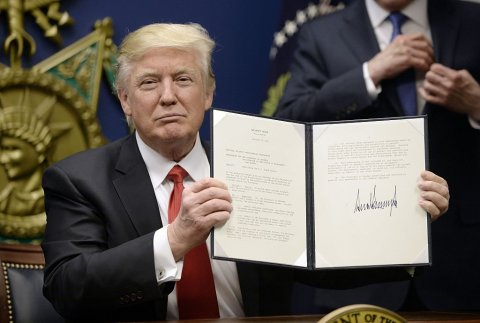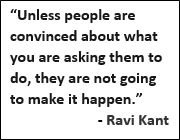
Early in his presidency, President Trump signed an executive order banning the entry of nationals from seven countries into the U.S. for 90 days, along with other suspensions. The action stirred loud voices on both sides of the issue. The opposition was widespread and loud, but many polls show that more people supported the action, even if they do so more quietly. Regardless of the pros and cons of the action, there is one point on which nearly everyone can agree: the way the order was rolled-out was problematic. In examining these problems, there are valuable lessons about change management.
While the President enacted the order quickly, implementing the new policy had immediate and lasting consequences on those impacted. People were stuck in airports. Confusion  about the details was widespread, and a flurry of judicial activity has followed. What happens when an organization makes a decision to implement a new policy without considering its implications on stakeholders? Very simply, it makes more work for everyone. So, whether your title is President of the United States, CHRO or HR Business Parnter, here are four basic change management ideas to consider when implementing your next policy change or initiative.
about the details was widespread, and a flurry of judicial activity has followed. What happens when an organization makes a decision to implement a new policy without considering its implications on stakeholders? Very simply, it makes more work for everyone. So, whether your title is President of the United States, CHRO or HR Business Parnter, here are four basic change management ideas to consider when implementing your next policy change or initiative.
- Identify your stakeholders: It is critical to identify ALL your internal and external stakeholders. This includes those who will influence, drive, or be impacted by the change. Your leaders should be the change champions, as they promote their commitment to the cause. Listen to your stakeholders, and understand that they will need time to fully adopt and embrace it. No doubt, the most impacted stakeholders in this example were the banned nationals, while immigration officials were expected to help drive the change.
- Vet your new policy: Use all the intelligence resources at your disposal to ensure your policy is sound. Reach out to legal counsel, co-workers and other departments so your policy can been vetted properly. Including these and other stakeholders is essential for buy-in, and it will protect your organization from unnecessary headaches in the future. The day after the ban was implemented, numerous civil liberties groups sprang into action to counteract the ban. They won a nationwide stay on the executive order that stopped affected people detained in airports from being deported. A review of the policy by U.S. internal departments first may have avoided this reversal and allowed for a more defensible policy to be set forth.
- Develop and execute your change plan: A detailed change plan is essential to an operative change, whether it’s a change in policy, process, technology or organizational structure. This starts with clear communications that outline the what, why, where and when of the change. Communicating early gives stakeholders ample time to digest new information. Giving the travelers advance notice of the ban would have allowed them to prepare and make other arrangements prior to leaving for the U.S. Furthermore, training gives stakeholders the knowledge necessary to execute, support and sustain the change. If immigration officials were trained prior to the order, they would have clear direction on detainee procedures, and they would have understood where to get support information when required.
- Learn and adjust: Take a pulse on how your new policy has been adopted. No policy is perfect, so don’t assume it will be right at the outset. Utilize surveys, round-tables, and other feedback loops to gather your data. Be honest. Share your findings, then communicate and implement adjustments as needed following the same change plan guidelines as above. Do this at regular intervals. Many citizens, action groups, and federal court judges provided feedback on this policy. Our politicians worked to influence any adjustments to the policy after it was enacted.
As leader of the free world, one of the biggest adjustments Mr. Trump had to make was to get used to having less power than he did as a business owner. Many middle managers have more experience in this area than an owner of a multi-billion dollar global enterprise, because managers are accustomed to building consent and support to make their plans and policies succeed.
Quickly throwing new procedures over the wall only confuses stakeholders, forces them to create their own processes, and fosters fear. Know and involve your audience, get proper approval, and provide guidance for your stakeholders. This is a better recipe for a smooth transition and wide adoption of a policy that can achieve its intended results, quickly and effectively.


